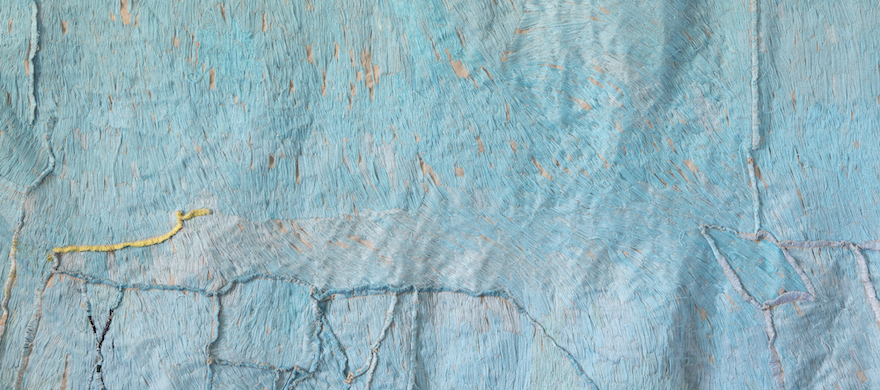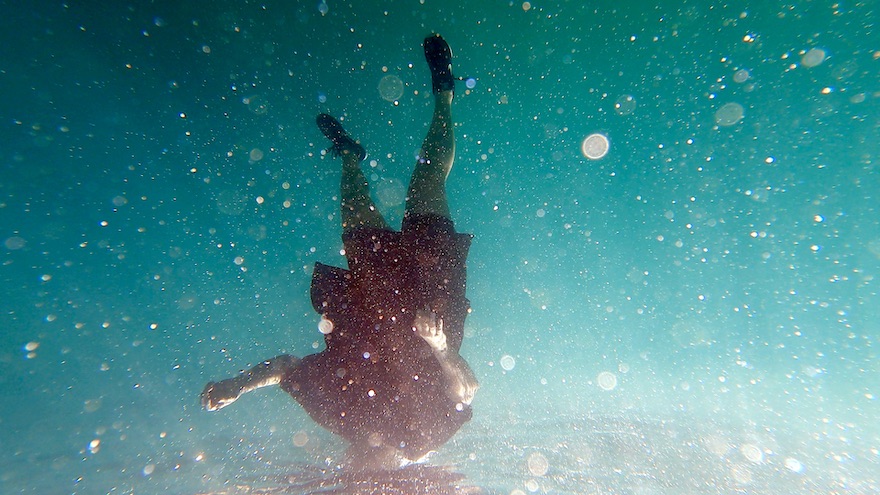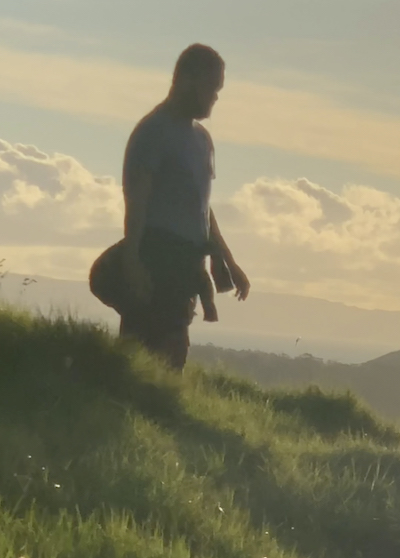Named after The Triffid’s 1986 album, ‘Love in Bright Landscapes’ is an exhibition that explores the shiny and seamy sides of Perth and Los Angeles, writes Kim Kirkman, who also takes in two other exhibitions currently on show at PICA.
Tales of two sun-bleached cities
3 August 2021
- Reading time • 8 minutesVisual Art
More like this
- Waves of influence span an ocean
- A walk with Tina Stefanou
- A blaze of glorious people
‘Love in Bright Landscapes’, Annika Kristensen (curator); ‘I Don’t See Colour’, Salote Tawale; ‘Leitī’, Sione Monū ·
Perth Institute of Contemporary Arts ·
New PICA exhibition “Love in Bright Landscapes” takes its name from the 1986 album of cult Perth band The Triffids and, like the songs of that iconic anthology, seeks to offer a sense of the city by creatively exploring its places and stories. Through the work of 14 artists, curator Annika Kristensen has drawn Perth through comparison to another sprawling, sunny, west coast city – Los Angeles, California.
The Triffids’ “big and empty” skies, wide vaults of blue that span both cities, are conjured in Perth-born, Melbourne-based artist Teelah George’s Sky Piece, Falling (Melbourne, Perth) (2020-21). Bronze shapes are shadow-cast on the hand-stitched and sun-bleached indigo.
In his neon sculpture Horizon (2014), Perth born, Sydney-based artist Brendan Van Hek also evokes the light play characteristic of each metropolis, both by day – in lines of an almost artificially turquoise ocean – and in the blaze of a city at night.
Those much-romanticised Australian icons – space, driving and “the wide open road” – loom large in Lick in The Past (2016), by French-born, London/Brussels-based artist Laure Prouvost, even as the video work references emblematic Los Angeles locales like Venice Beach and the Sixth Street viaduct “Thunder Road”. It’s a filmic fever dream in which scenes of palm trees, ice creams and blond, urbane kids bathed in golden light are juxtaposed with gristly images of squashed bugs, cow udders and roasting pigs. Prouvost’s meditation on freedom and distance also provides the soundtrack to the broader exhibition.

270.0 x 210.0 cm, Courtesy the artist and Neon Parc, Melbourne and Gallery9, Sydney. Photo: Bo Wong
Carmen Argote’s digital film Last Light (2020) and Sterling Wells’s 2020/2021 watercolour series show a grungy and neglected LA against the pristine Perth of Kevin Ballantine’s 1980s photo series. In her mostly monochrome film, Mexico born, LA-based Argote evokes a cold and lonely sterility in grainy sidewalks, hard edges and chain link fences, its narrator yearning to “touch the city” through her COVID mask and plastic gloves.
LA-based Wells meanwhile, makes treasure of roadside trash, his vibrant textural paintings taking subjects from fringes of his home-town – submerged shopping trolleys, distant powerlines and discarded styrofoam, California poppies growing amidst the detritus. Against these seamier sides of the American city, Ballantine’s photo record of a spotless, bright and sun-drenched Perth stands in sharp relief.
Local artist Emma Buswell interrogates and subverts narratives of our fair city in her epic work Once Upon a Time in…, (2021), a 20-metre hand-knitted scarf, suspended from the gallery’s upper storey in the hands of a headless figure. Described by the artist as “part Simpsons, part Bayeux Tapestry,” the artwork offers a playful chronicle of Perth’s most infamous events of the 1980s, 1990s and 2000s. Symbols and slogans recalling Alan Bond, WA Inc and the Claremont serial killings evoke a seedy frontier city of dodgy dealings and secret handshakes. The hands from which the piece unfurls, crafted from kitchen gloves, are a nod, the artist says, to the “white hands throughout that have shaped our city’s history”.
Created by Noongar writer and researcher Cass Lynch and multi-disciplinary artist Mei Swan Lim – both Boorloo/Perth based – Dampland (2021) is a lyrical new audio work in the Noongar oral storytelling tradition. In it, a balanced screen featuring rippling water positions a “slice of river on the wall,” and captured sound played through headphones limits visual cues to open up new elements for Lynch’s words. The story, illustrated by the gurgle of water and the twitter of birds, centres where we live within climate cycles and deep time, orientating Wadjemup (Rottnest) and the Swan coastal plain with their earlier forms and enabling a new conception of this city we think we know.

Upstairs, “I don’t see colour” is an exhibition of new work by Fijian Australian artist Salote Tawale, that takes as its starting point a conversation the artist had with a student at a party in the UK, and the implications of the title statement in relation to climate change and the colonial and capitalist structures that have caused it.
A multi-disciplinary exhibition, “I don’t see colour” feels like an homage to the ocean; its power, capacity for cleansing, its ebb and flow. A floor-to-ceiling chequerboard of striped cubes in fawn, light blue and muted green, creates the impression of being underwater, with light filtering through the deep.
Five large, suspended portraits are all missing mouths, oversize teeth and eyeless faces. Bleached of colour, blind, lacking identity and expression, they are arranged like a barrier to the viridescent tapestry of this undersea realm. It’s possible to conceive these identity-less faces, submerged within the Pacific Ocean that connects Tawale’s translocated homes of Fiji and Australia, as renderings not only of what a world without colour, place or history might look like; but an evocation, too, of one unshielded to the equally blind ravages of climate change.
Beyond the portraits a corrugated iron makeshift shelter – a gathering place- is furnished with traditional woven matting, homemade protective masks crafted from salvaged plastic hang at the entry, and a screen is placed in the corner. On it, the artist floats in the sea, hugged by cool waters, held in their power and in the swirling colonial legacies and personal histories it encompasses. “The sea refreshes me,” she says. “Washes away centuries of hardened power.”

Also on the upper floor is Leitī. Created by Sione Tuívailala Monū, a Tongan artist living between Canberra and Auckland, Leitī is an intimate film diary. Centring on Monū and their friend and collaborator Manuha’apai Vaeatangitau, this series of short films explores their experiences as fakaleiti or leitīs, a Tongan word describing the third gender.
Comprised mostly of personal iPhone footage, this film diary is a tender and captivating catalogue of friendship and self-expression. Monū captions the film “the contemplations and mundanities of leitī”. But those contemplations and mundanities are charged with their fun, warmth and grace. Footage of the subjects smoking, dancing, cooking breakfast or being fitted for clothes are unpolished and personal in the way of a hand-scrawled note, presenting Leitī as both an expression and an embrace of themselves.
“Love in Bright Landscapes”, “I Don’t See Colour” and “Leiti” continue until 10 October.
Pictured is a detail from Laure Prouvost’s ‘Lick in the past’ 2014, video still. Courtesy the artist and Galerie Nathalie Obadia (Paris and Brussels), carlier | gebauer (Berlin and Madrid) and Lisson Gallery (London, New York, and Shanghai).
Like what you're reading? Support Seesaw.





